第62章
Having spoken of the generation of all insects, we must now speak of the testacea.Here also the facts of generation are partly like and partly unlike those in the other classes.And this is what might be expected.For compared with animals they resemble plants, compared with plants they resemble animals, so that in a sense they appear to come into being from semen, but in another sense not so, and in one way they are spontaneously generated but in another from their own kind, or some of them in the latter way, others in the former.Because their nature answers to that of plants, therefore few or no kinds of testacea come into being on land, e.g.the snails and any others, few as they are, that resemble them; but in the sea and similar waters there are many of all kinds of forms.But the class of plants has but few and one may say practically no representatives in the sea and such places, all such growing on the land.For plants and testacea are analogous; and in proportion as liquid has more quickening power than solid, water than earth, so much does the nature of testacea differ from that of plants, since the object of testacea is to be in such a relation to water as plants are to earth, as if plants were, so to say, land-oysters, oysters water-plants.
For such a reason also the testacea in the water vary more in form than those on the land.For the nature of liquid is more plastic than that of earth and yet not much less material, and this is especially true of the inhabitants of the sea, for fresh water, though sweet and nutritious, is cold and less material.Wherefore animals having no blood and not of a hot nature are not produced in lakes nor in the fresher among brackish waters, but only exceptionally, but it is in estuaries and at the mouths of rivers that they come into being, as testacea and cephalopoda and crustacea, all these being bloodless and of a cold nature.For they seek at the same time the warmth of the sun and food; now the sea is not only water but much more material than fresh water and hot in its nature; it has a share in all the parts of the universe, water and air and earth, so that it also has a share in all living things which are produced in connexion with each of these elements.Plants may be assigned to land, the aquatic animals to water, the land animals to air, but variations of quantity and distance make a great and wonderful difference.The fourth class must not be sought in these regions, though there certainly ought to be some animal corresponding to the element of fire, for this is counted in as the fourth of the elementary bodies.But the form which fire assumes never appears to be peculiar to it, but it always exists in some other of the elements, for that which is ignited appears to be either air or smoke or earth.Such a kind of animal must be sought in the moon, for this appears to participate in the element removed in the third degree from earth.The discussion of these things however belongs to another subject.
To return to testacea, some of them are formed spontaneously, some emit a sort of generative substance from themselves, but these also often come into being from a spontaneous formation.To understand this we must grasp the different methods of generation in plants; some of these are produced from seed, some from slips, planted out, some by budding off alongside, as the class of onions.In the last way produced mussels, for smaller ones are always growing off alongside the original, but the whelks, the purple-fish, and those which are said to 'spawn' emit masses of a liquid slime as if originated by something of a seminal nature.We must not, however, consider that anything of the sort is real semen, but that these creatures participate in the resemblance to plants in the manner stated above.
Hence when once one such creature has been produced, then is produced a number of them.For all these creatures are liable to be even spontaneously generated, and so to be formed still more plentifully in proportion if some are already existing.For it is natural that each should have some superfluous residue attached to it from the original, and from this buds off each of the creatures growing alongside of it.Again, since the nutriment and its residue possess a like power, it is likely that the product of those testacea which 'spawn' should resemble the original formation, and so it is natural that a new animal of the same kind should come into being from this also.
All those which do not bud off or 'spawn' are spontaneously generated.Now all things formed in this way, whether in earth or water, manifestly come into being in connexion with putrefaction and an admixture of rain-water.For as the sweet is separated off into the matter which is forming, the residue of the mixture takes such a form.